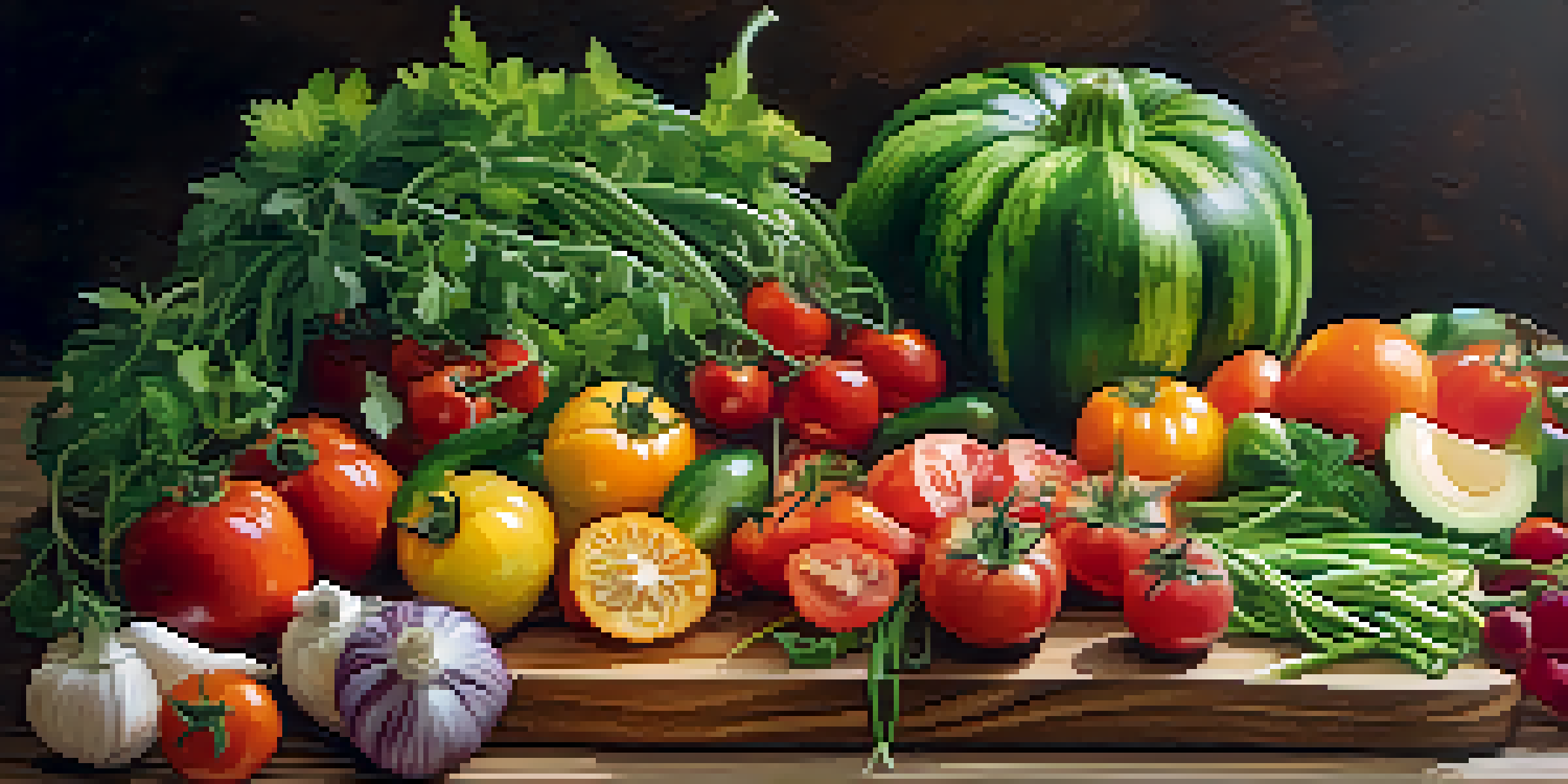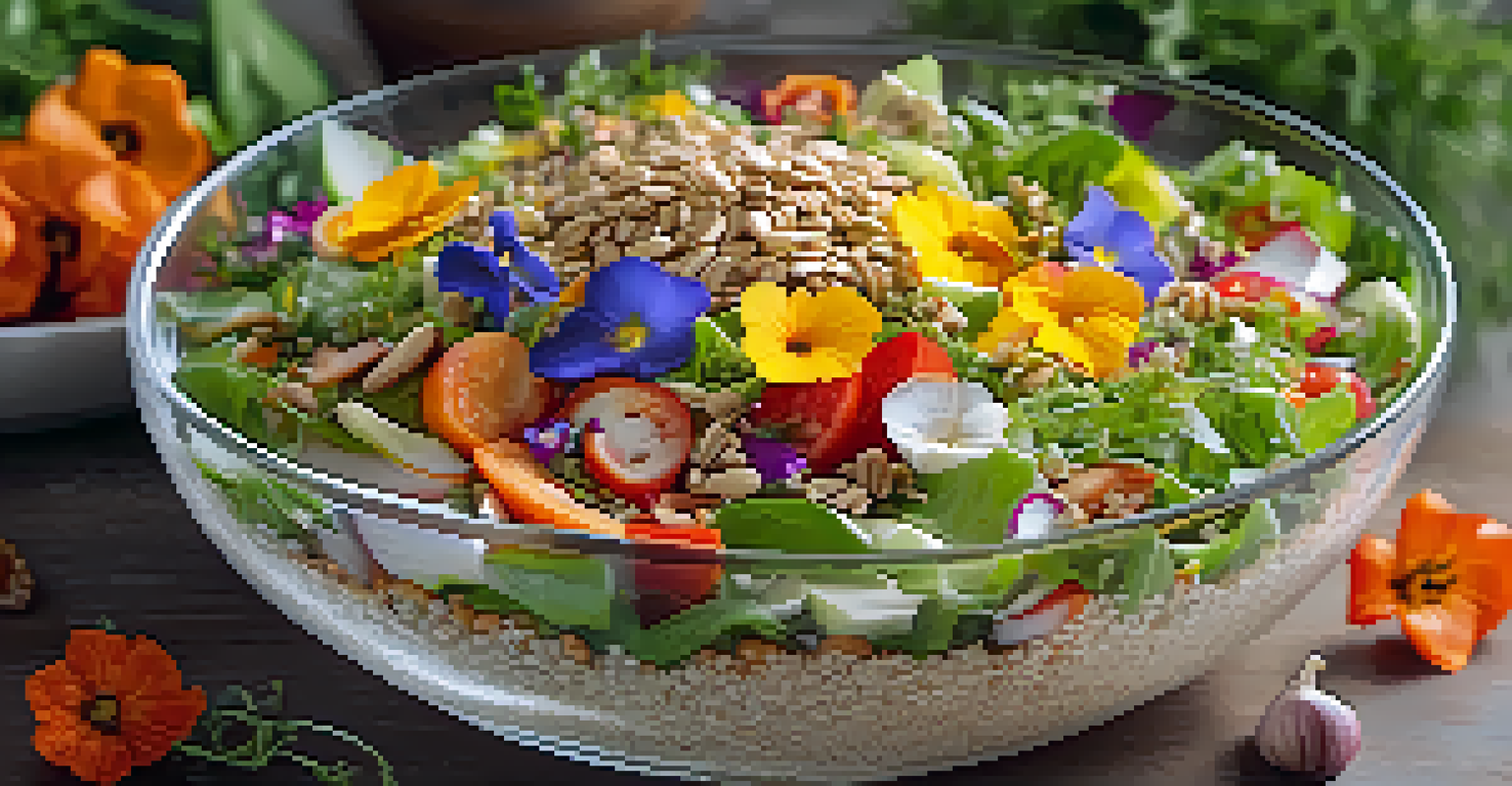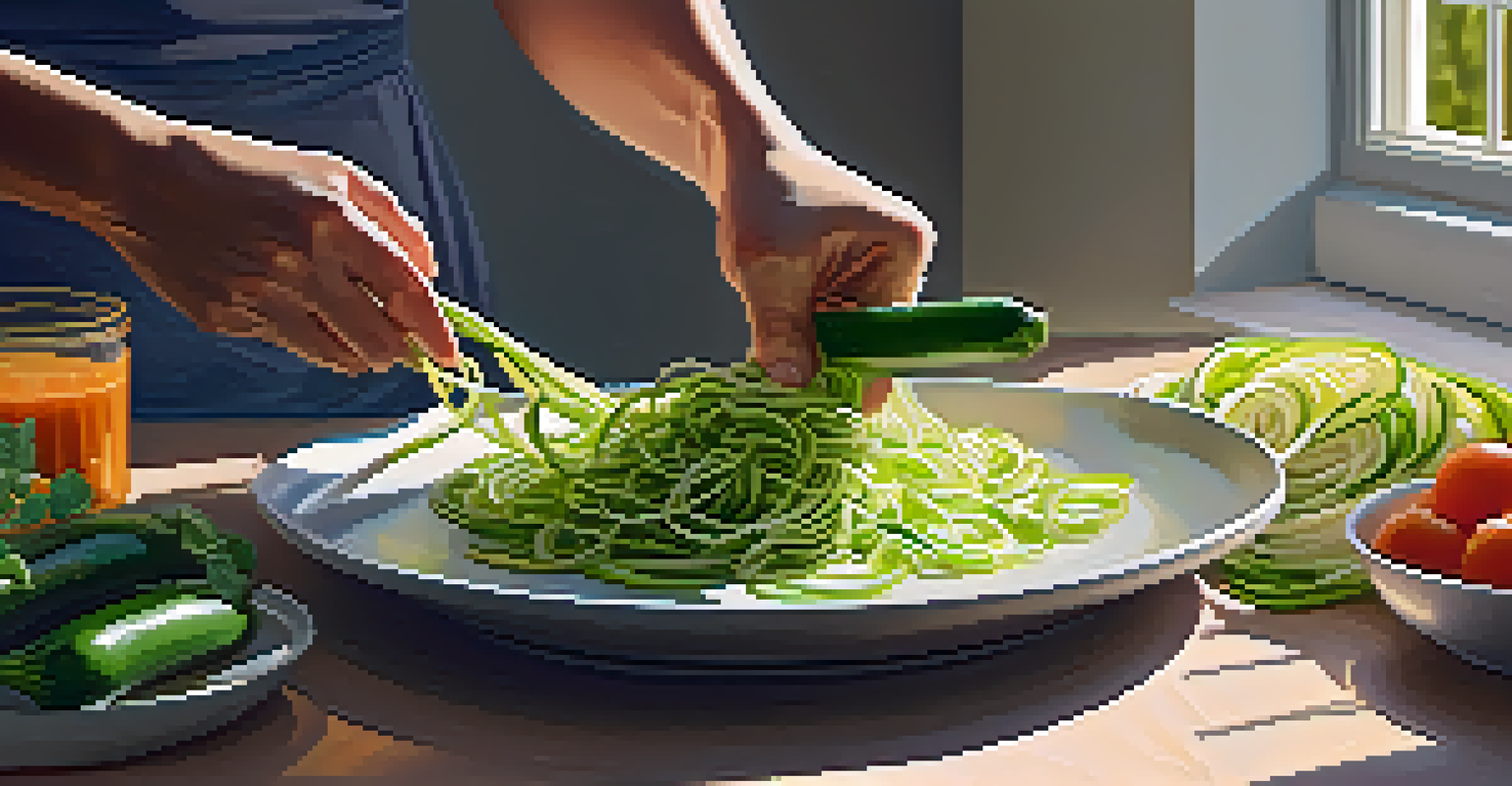Innovative Techniques in Raw Food Preparation and Artistry

Understanding Raw Food Preparation Techniques
Raw food preparation emphasizes using fresh, unprocessed ingredients to retain their natural nutrients. Techniques such as soaking, sprouting, and dehydrating are popular among raw food enthusiasts. These methods not only enhance flavors but also improve the digestibility of certain foods, making them more enjoyable and nutritious.
Let food be thy medicine and medicine be thy food.
Soaking nuts and seeds, for example, unlocks enzymes that help in their digestion. Sprouting grains and legumes increases their nutritional value and adds a delightful crunch. Dehydrating fruits and vegetables creates unique textures and flavors, allowing for creative snacking options that are both healthy and satisfying.
Understanding these fundamental techniques sets the stage for more advanced raw food artistry. By mastering these methods, you can elevate your dishes from simple salads to gourmet meals that impress both the palate and the eye.
Creative Flavor Pairings in Raw Cuisine
One of the most exciting aspects of raw food preparation is the ability to experiment with flavor pairings. Ingredients like citrus fruits, fresh herbs, and spices can transform a dish from bland to bursting with flavor. For instance, pairing avocado with lime and cilantro can create a refreshing guacamole that delights the senses.

Additionally, incorporating unexpected ingredients, such as edible flowers or unique spices, can add depth to your dishes. Think about how a sprinkle of smoked paprika can elevate a simple raw vegetable platter to gourmet status. These combinations not only enhance taste but also add visual appeal, making your meals more inviting.
Master Raw Food Techniques
Learning techniques like soaking, sprouting, and dehydrating enhances the flavor and nutritional value of raw dishes.
Ultimately, exploring creative flavor pairings allows you to express your personality through your food. This adventurous approach to raw cuisine invites others to join in on the experience, making mealtime a social and joyful occasion.
Mastering Presentation in Raw Food Artistry
Presentation plays a crucial role in raw food artistry, as it can make a significant impact on how a dish is perceived. Utilizing various colors, shapes, and arrangements can transform a simple salad into a vibrant centerpiece. Consider using contrasting colors, like bright red tomatoes against dark green lettuce, to create visual interest on the plate.
You are what you eat, so don’t be fast, cheap, easy, or fake.
Incorporating techniques like stacking or layering ingredients can also add height and texture. For example, stacking thinly sliced vegetables or spiraled zucchini can create an eye-catching effect that invites diners to dig in. Don't shy away from garnishing with fresh herbs or edible flowers to add that final touch of elegance.
By investing time in presentation, you elevate the dining experience beyond just nourishment. It turns meals into an art form, encouraging appreciation for the beauty of raw foods and making them even more enjoyable.
Incorporating Fermentation in Raw Dishes
Fermentation is a powerful technique that adds depth and complexity to raw foods. This process not only enhances the flavor but also boosts the nutritional value by introducing beneficial probiotics. Foods like sauerkraut, kimchi, or fermented nut cheeses can be included in raw dishes, providing a tangy kick that complements other ingredients.
Creating your own fermented foods at home is simpler than it sounds. All you need is a few basic ingredients and a little patience. As the flavors develop over time, the anticipation of tasting your creations adds to the joy of raw food preparation.
Embrace Seasonal Ingredients
Using seasonal ingredients not only boosts flavor but also supports sustainability and local agriculture.
Incorporating these fermented elements into your raw meals not only diversifies your diet but also supports gut health. This alignment of taste and wellness reflects the essence of raw food artistry, making it a delightful journey for both the cook and the consumer.
Utilizing Kitchen Gadgets for Raw Food Prep
The right kitchen gadgets can elevate your raw food preparation to new heights. Tools like spiralizers, food processors, and mandolins make it easy to create intricate textures and shapes. For example, spiralizing zucchini into 'noodles' offers a fun and healthy alternative to traditional pasta.
Investing in a high-quality blender is essential for creating smooth sauces, dressings, and desserts. Blending nuts into creamy nut butters or smoothies can turn simple ingredients into luxurious treats. These gadgets not only save time but also inspire creativity in the kitchen.
By leveraging these tools, you can streamline your preparation process and experiment with new techniques. The result is a more enjoyable cooking experience that encourages you to explore the full potential of raw food artistry.
Seasonal Ingredients and Their Impact on Raw Dishes
Embracing seasonal ingredients is a cornerstone of raw food preparation, enhancing both flavor and sustainability. When you use fruits and vegetables that are in season, you tap into their peak freshness and taste. For instance, summer brings an abundance of juicy tomatoes and sweet peaches, perfect for vibrant salads and refreshing salsas.
Shopping at local farmers' markets can introduce you to unique seasonal produce you might not find at a grocery store. This not only supports local agriculture but also encourages creativity in your cooking as you experiment with new ingredients. Imagine crafting a raw dish around a rare heirloom tomato or a fragrant bunch of fresh basil.
Explore Global Culinary Influences
Incorporating elements from diverse cuisines can elevate raw dishes and introduce exciting new flavors.
By aligning your raw food creations with the seasons, you create meals that are more in tune with nature. This practice fosters a deeper connection to the food you eat and enhances your appreciation for the culinary journey.
Exploring Global Influences in Raw Food Preparation
Global cuisines offer a treasure trove of inspiration for raw food preparation. From the vibrant flavors of Thai salads to the refreshing simplicity of Mediterranean mezze, there is much to explore. Incorporating elements from these diverse culinary traditions can elevate your raw dishes and introduce exciting new flavors.
For example, using ingredients like miso or tahini can add depth to dressings and dips, while spices like cumin or coriander can introduce warmth and complexity. Exploring these global influences not only broadens your palate but also encourages a more inclusive approach to food.

By weaving in these international flavors, you create a fusion of raw food artistry that reflects a world of culinary possibilities. This exploration not only enhances your cooking skills but also allows you to share diverse cultural experiences through your meals.